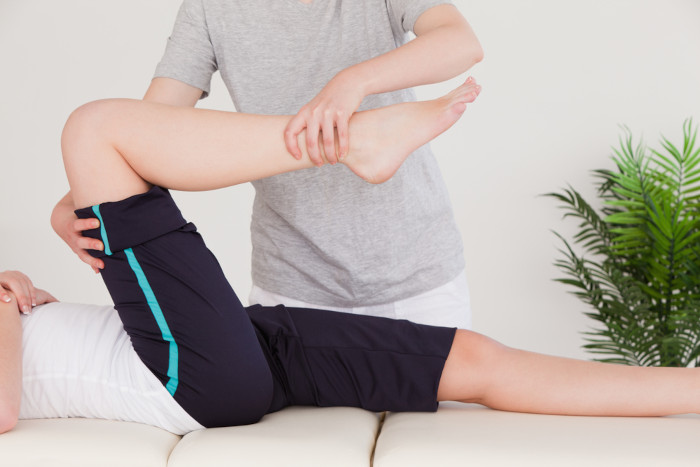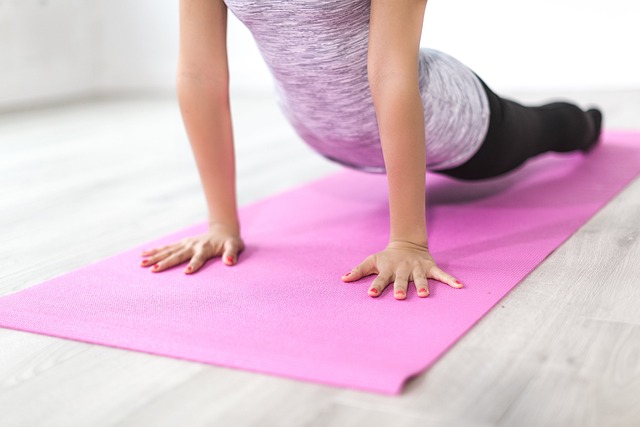World of Fascial Stretch Therapy: Unlocking the Power of Stretching
Assisted stretching sessions have gained popularity among athletes and fitness enthusiasts due to their potential benefits in improving flexibility, range of motion, and overall performance. During a stretch session, a professional stretch therapist or specialist guides the client through various movements and techniques to target specific muscles, joints, and connective tissues.
Does assisted stretching work?
The goal of an assisted stretch session is to help the athlete or client gain better mobility, reduce tightness, and ensure optimal muscle function. By locating and isolating tight areas, the therapist can work on releasing tension and improving the length of the body’s connective tissue, including the fascia and joint capsules. This technique can be particularly beneficial for athletes recovering from injuries or looking to enhance their sport-specific movements.

The benefits of assisted stretching are numerous. Athletes often experience faster recovery, pain reduction, and improved strength and flexibility. By focusing on specific areas of tightness or discomfort, they can recover from back injuries or rehabilitate isolated muscles effectively. Moreover, the frequency and intensity of the stretches can be adjusted to suit individual needs, ensuring the best results.
Assisted stretching works by targeting the muscles and joints involved in a particular movement or exercise. The therapist applies gentle pressure and elongates the muscles to enhance their flexibility. By doing so, they optimize the body’s range of motion and reduce the risk of injury during physical activities.
Furthermore, assisted stretching also improves muscular flow and promotes a better connection between muscles and joints. This can enhance an athlete’s overall performance, allowing them to move more efficiently and with less strain. As a result, the athlete can achieve their fitness and mobility goals while remaining pain-free and mobile.
Assisted stretching is a fantastic technique for improving flexibility, mobility, and overall performance. By working with a professional stretch therapist or specialist, athletes and clients can target specific areas of tightness and reduce muscular tightness. If you’re an athlete or fitness enthusiast looking to enhance your fitness journey, highly recommend incorporating assisted stretching into your routine.
Which stretching method is most effective?
Stretching is an essential component of any fitness routine, aiding in flexibility, injury prevention, and improved athletic performance. However, determining the most effective stretching method can be subjective, as it depends on individual goals and preferences.
Static stretching involves holding a stretch for an extended period. It promotes muscle relaxation, increases flexibility, and improves range of motion. This method is often used during cool-downs and has been found to be effective for increasing overall flexibility.

PNF stretching, or proprioceptive neuromuscular facilitation, combines stretching and contracting muscles. It typically involves a partner or a device to provide resistance. PNF stretching is thought to increase flexibility by utilizing the body’s reflexes and is commonly used in rehabilitation settings. It has been shown to be highly effective for improving range of motion and flexibility.
Ballistic stretching involves bouncing or jerking movements to force muscles beyond their normal range. While it can increase flexibility, it carries a higher risk of injury and is generally not recommended for most individuals, especially beginners.
Ultimately, the most effective stretching method depends on various factors, including the individual’s fitness level, goals, and specific activities. A well-rounded stretching routine often incorporates a combination of static and dynamic stretches tailored to one’s needs.
It’s important to note that stretching alone may not be sufficient for certain goals, such as building strength or muscle mass. It should be complemented by other exercises and a balanced fitness program.
Before starting any stretching routine, it’s crucial to warm up the body through light aerobic exercises to increase blood flow and prepare the muscles. Additionally, proper form, gradual progression, and listening to the body’s signals are key to preventing injuries during stretching.
There isn’t a one-size-fits-all answer to the question of which stretching method is most effective. It’s best to consider individual factors and goals when designing a stretching routine. Experimenting with different methods, seeking guidance from a qualified fitness professional, and staying consistent will help maximize the benefits of stretching and improve overall flexibility.
From Pain to Power: Discovering the Benefits of Stretch Therapy
Unlike traditional stretching routines, stretch therapy involves targeted techniques performed by a skilled practitioner. By combining elements of yoga, Pilates, and rehabilitation, this practice aims to transform pain into power.
Stretch therapy offers numerous benefits for both the body and mind. First and foremost, it can alleviate chronic pain and tension. Whether caused by sedentary lifestyles, repetitive movements, or injuries, tight muscles can hinder mobility and lead to discomfort. Stretch therapy utilizes gentle yet effective stretches to release muscle tension, promote blood flow, and improve joint mobility. Over time, this can result in reduced pain and increased flexibility.
Moreover, stretch therapy is not limited to athletes or those with injuries. It is accessible to people of all fitness levels and ages. Whether you’re an office worker dealing with back pain or a senior citizen looking to maintain flexibility, stretch therapy can be tailored to your specific needs. By addressing imbalances in the body, it helps restore optimal movement patterns and enhances physical performance, enabling individuals to move with greater ease and efficiency.

Furthermore, stretch therapy can be a powerful tool for injury prevention. By improving flexibility and range of motion, it enhances the body’s ability to withstand stress and reduces the risk of muscle strains and joint injuries. Regular stretching can also improve posture and alignment, reducing the likelihood of chronic pain caused by poor postural habits.
Stretch therapy is typically performed in a one-on-one session with a trained therapist. Pro-Physio assesses the individual’s specific needs and develops a customized stretching routine. They may utilize techniques such as passive stretching, proprioceptive neuromuscular facilitation (PNF), or myofascial release to target specific muscle groups and promote optimal flexibility.
It’s important to note that stretch therapy should be approached with caution and under the guidance of a qualified professional. Incorrect stretching techniques or excessive force can lead to injuries. Therefore, it is crucial to consult with a certified stretch therapist who can provide proper guidance and ensure safety during the practice.
Stretch therapy offers a range of benefits that extend beyond basic flexibility improvement. From relieving pain and tension to promoting relaxation and injury prevention, it has the power to transform the body and mind. By embracing stretch therapy, individuals can unlock their physical potential, increase their overall well-being, and discover the joy and power that comes from a flexible, pain-free body.
Enhancing Activity and Improving Fitness: The Benefits of Fascial Stretch Therapy
One of the key benefits of Fascial Stretch Therapy is its ability to improve joint range of motion. Through a series of assisted stretching techniques, FST helps to release tension and adhesions within the fascia, allowing joints to move more freely. This increased range of motion not only enhances athletic performance but also reduces the risk of injuries. By improving joint mobility, FST enables individuals to perform movements with greater ease and efficiency.
Another advantage of FST is its positive impact on muscle function. The fascia plays a crucial role in transmitting forces generated by the muscles, allowing for efficient movement. When the fascia becomes tight or restricted, it can limit muscle contraction and compromise performance. FST helps to restore optimal muscle function by releasing tension within the fascia, allowing muscles to contract more effectively. This can lead to improved strength, power, and overall muscular performance.

Beyond its physical benefits, Fascial Stretch Therapy also offers psychological advantages. The deep, relaxing stretches performed during FST sessions can induce a state of deep relaxation and promote stress relief. This can be particularly beneficial for individuals with high-stress lifestyles or those recovering from intense physical activity. FST sessions provide an opportunity for individuals to unwind, release tension, and rejuvenate both the body and mind.
It is important to note that Fascial Stretch Therapy is a specialized technique that should be performed by a trained and certified practitioner. Each session is tailored to the individual’s specific needs, taking into account their goals, limitations, and health status. The practitioner utilizes a variety of stretching and mobilization techniques to optimize the benefits of FST while ensuring the safety and comfort of the client.
Fascial Stretch Therapy offers numerous benefits for enhancing activity and improving fitness. By targeting the fascia, this manual therapy technique enhances joint range of motion, improves muscle function, reduces pain, and promotes injury prevention. Additionally, FST provides a relaxation component, offering psychological benefits. Incorporating Fascial Stretch Therapy into a fitness routine can contribute to overall physical well-being, allowing individuals to move with greater ease, perform at their best, and enjoy an active and healthy lifestyle.
Restoring Health and Wellness: Assisted Stretching for Chronic Pain Relief in Perth
Chronic pain can significantly impact your quality of life, making even the simplest tasks challenging and enjoyable activities impossible. Conventional treatments often involve medication, which only provides temporary relief and can come with unwanted side effects. Assisted stretching, on the other hand, offers a holistic approach that targets the root causes of your pain.
During an assisted stretching session, you can expect a combination of passive and active stretches, with the practitioner guiding and supporting your body through the movements. This hands-on approach ensures proper alignment and prevents any strain or injury. The stretches are gentle yet effective, gradually increasing your range of motion and relieving tension in targeted areas.

Beyond the physical benefits, assisted stretching also has a positive impact on your mental well-being. The release of endorphins during the session can boost your mood and reduce stress levels. Many clients report feeling a sense of relaxation and rejuvenation after each session, making it a holistic experience for both the body and mind.
If you’re considering assisted stretching for chronic pain relief, it’s important to consult with a qualified practitioner. They will conduct a thorough assessment of your condition and medical history to ensure the treatment is safe and suitable for you. It’s crucial to communicate your goals and any concerns you may have to create a tailored plan that addresses your specific needs.
In conclusion, assisted stretching is a promising approach to restore health and wellness for those suffering from chronic pain. With its holistic benefits and personalized approach, it offers a natural and effective alternative to conventional treatments. So why continue to live in pain when you have the opportunity to find relief and regain control of your life? Explore the possibilities of assisted stretching and embark on a journey to a pain-free and vibrant future.



